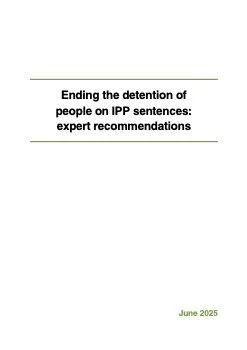By Sabrina C. Pearce
The number of people sentenced to life in prison has drastically increased over the last five decades. Of the 194,803 people serving life sentences in 2024, nearly half of them, 97,160 people, were serving parole-eligible sentences. A parole-eligible life sentence is also referred to as life with parole (LWP) or life with the possibility of parole (LWPoP). Parole is the conditional release of an incarcerated individual after spending a portion of their sentence in prison. Its purpose at inception was to serve as a bridge between an incarcerated person and their community, balancing the needs of the individual and the needs of the community, with the aim toward reintegration.
To be eligible for parole, a person sentenced to life must serve a required minimum sentence or reach their “parole eligibility date.” The minimum parole eligibility date is the earliest point at which an incarcerated individual may be considered for parole, minus any time credits earned. Once the required minimum sentence is served, these individuals may re-enter society upon the approval of a paroling authority, most often a parole board. But as this report shows, over the past 50 years legislators across the country have raised the minimum sentence required for parole eligibility, delaying release of millions and significantly transforming the meaning of a life sentence.
In addition, governors have appointed parole commissioners who are reluctant to grant parole. As a result of both factors, newly paroled life-sentenced individuals have served longer prison terms than those in years past. Furthermore, even fewer people are receiving parole hearings in recent years as political, public, and media pressures to adopt more punitive practices continue to rise. The result: increased prison terms and prolonged punishment.
Longer prison sentences are costly and divert important investments away from effective measures to prevent crime and incarceration, such as mental health support, healthcare services, jobs, education, and other resources that produce healthier and safer communities. Lengthy periods of delay can lead to disillusionment and diminish the hope and well-being of those incarcerated as well as their supportive loved ones and communities as they longingly await the day of release. Timeliness in parole hearings is crucial as parole delays interfere with an incarcerated person’s ability to preserve family, friends, community, and other ties, which may present challenges for successful reintegration upon release.
Through in-depth profiles of five states and the experiences of two individuals, this report illustrates the trend toward increasing wait times for initial parole hearings, subsequent rehearings, and sometimes the elimination of parole eligibility entirely for individuals serving parole- eligible life sentences.
Washington, DC: The Sentencing Project, 2025. 24p.









